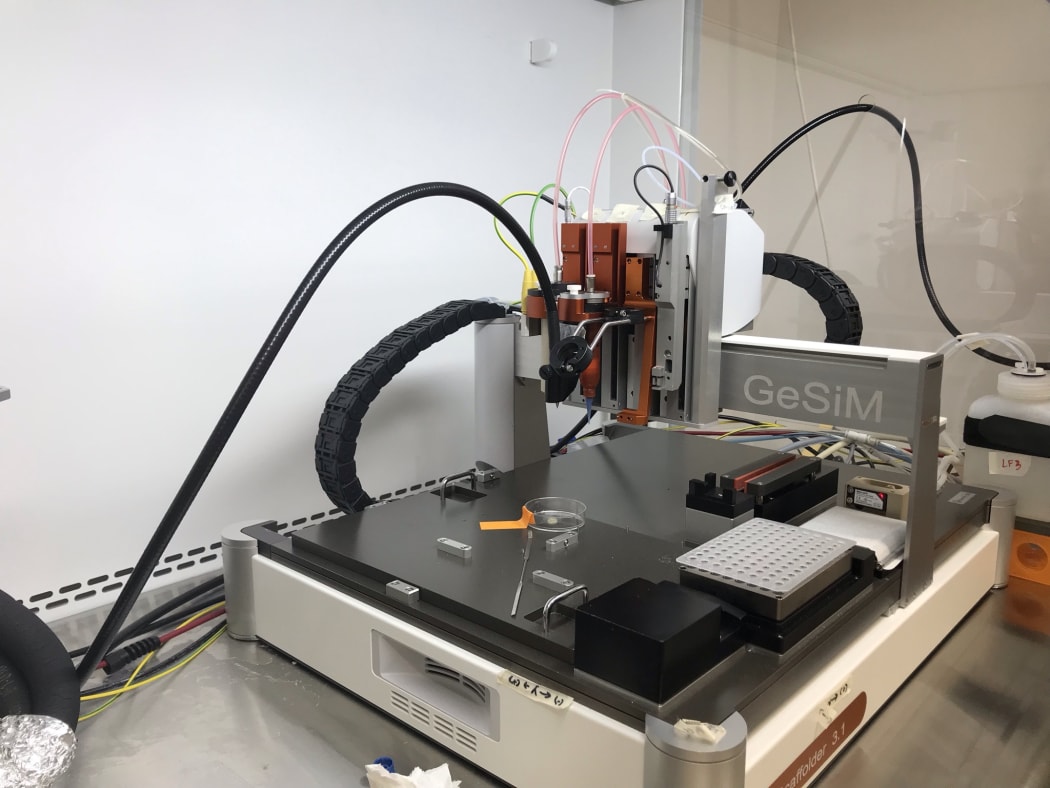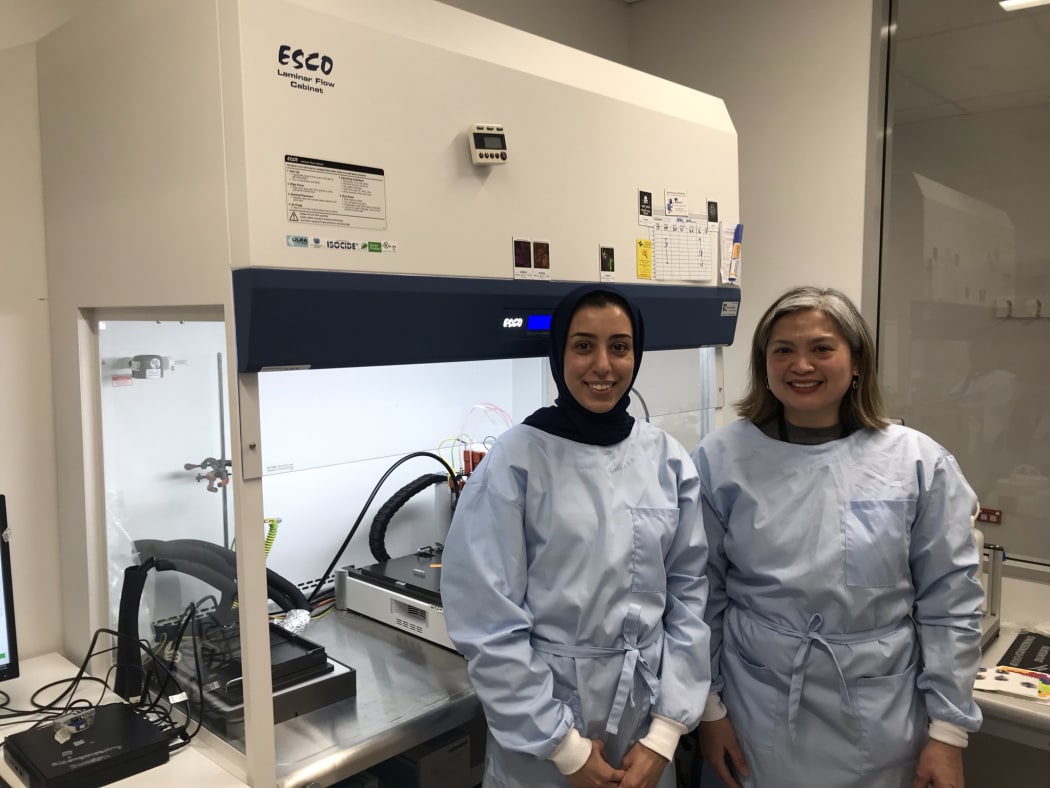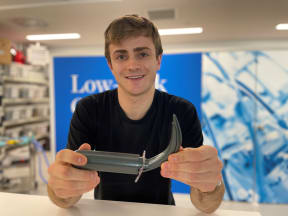Stem cell infused wound dressings that promote healing, bone scaffolds that help knit breaks before dissolving naturally and clever device design to half the time of emergency life-saving procedures are all ways bioengineering is changing healthcare.
Bioengineering is paving the way for new and better healthcare, and new research projects - with 3D bioprinters at the University of Otago and tracheostomy kit design at the University of Canterbury - are looking for new ways to save lives.

The GeSiM BioScaffolder 3.1 3D Bioprinter Photo: RNZ / Claire Concannon
Follow Our Changing World on Apple Podcasts, Spotify, Stitcher, iHeartRADIO, Google Podcasts, RadioPublic or wherever you listen to your podcasts.
Ordering up organs
The over-arching goal for 3D bioprinting bioengineers, such as Dr. Jaydee Cabral and her team at Otago’s Chemistry Department, is to develop 3D printed organs made of the patient's own cells for transplant. But it will be a while before they get there.
Cabral is focusing on overcoming one of the major roadblocks on the path to those new 3D printed organs - getting the vascularisation right. That means figuring out how to make the blood vessels needed to spread nutrients through the organs and take away waste material, and they are tricky to recreate. So Cabral is starting smaller, by creating a wound dressing that will promote healing for patients with chronic wounds, for example, foot ulcers in diabetic patients.
Alongside this, Mina Rajabi, a PhD student in Cabral's lab, is working on a bone healing scaffold. Instead of using metal rods or pins this scaffold will encourage the bones to knit together and grow, before naturally degrading inside the body.
Rajabi and Cabral' fill Claire Concannon in on the potential of 3D bioprinting and how to choose the right materials, add-ons and structure for what you are trying to make.

Mina Rajabi & Dr. Jaydee Cabral Photo: RNZ / Claire Concannon
Dr. Cabral's work was funded by Health Research Council of NZ Explorer Grant and a Lottery Health Research Grant.
Designing better medical devices

Student Engineer of the Year, Francis Pooke with his new tracheostomy kit device. Photo: Supplied UC
When the pressure's on and someone's airway is blocked, sometimes the only solution is an emergency tracheostomy.
But it can be a time consuming procedure with many steps and the risk of complications.
Now a University of Canterbury student has designed a new, simplified version that has halved the time it takes to perform a tracheostomy
Katy Gosset talks to Student Engineer of the Year, Francis Pooke, and looks at the bigger picture of how bioengineering can transform health care.


